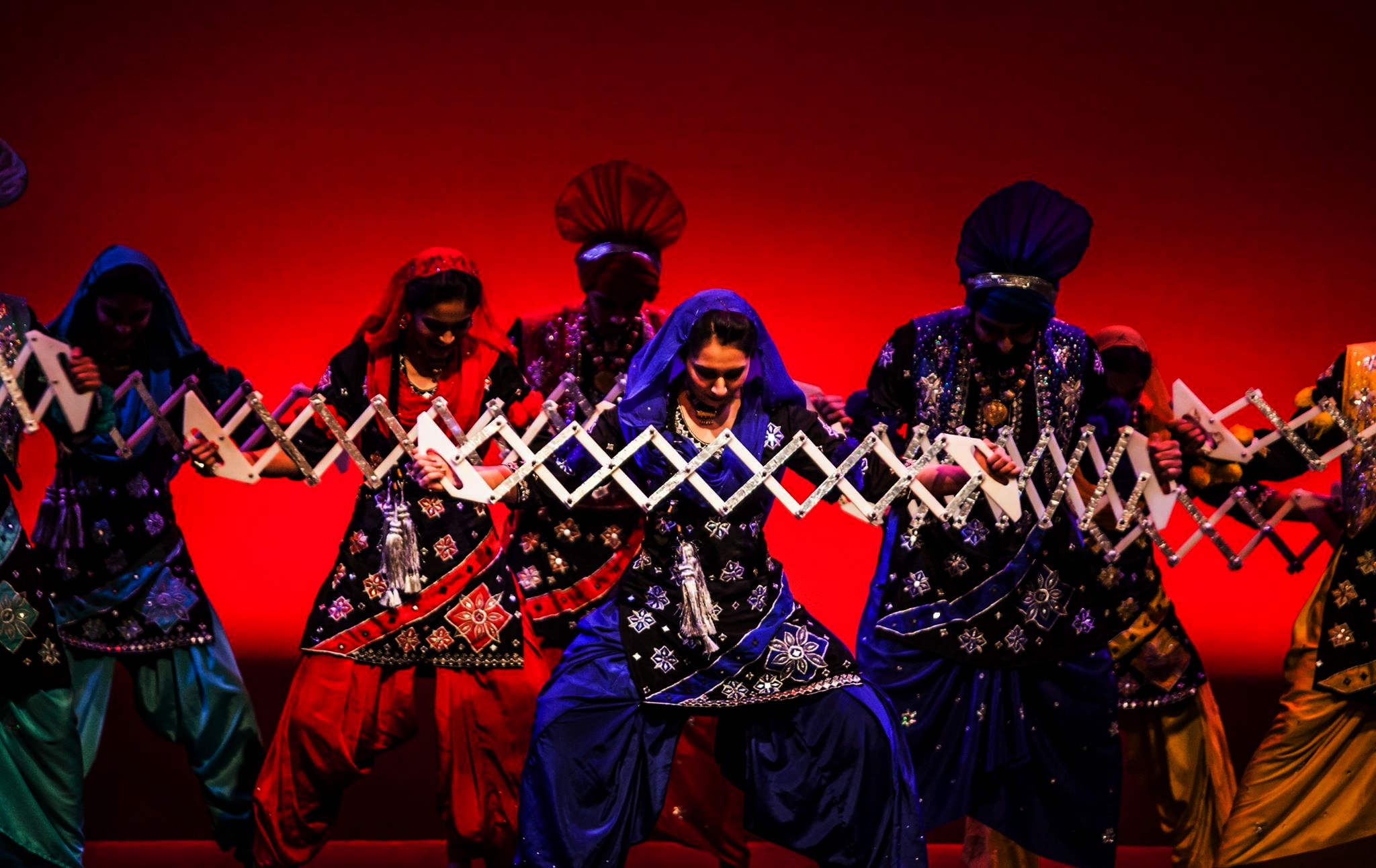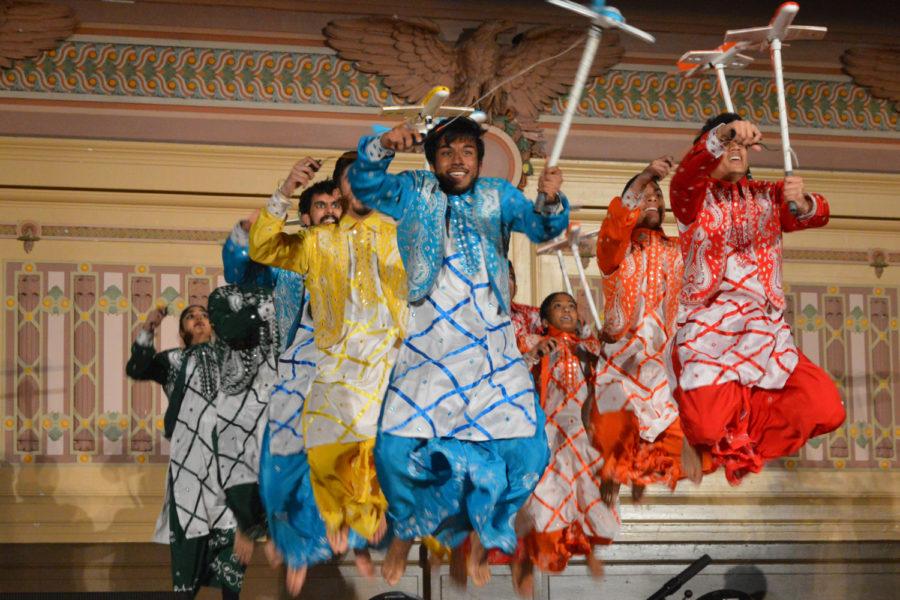In my previous post, I discussed the musical instruments that have been used in bhangra for years. These instruments add to the musical art by setting the beat or tone. They also add a nice accompaniment to the boliyan (lyrics) of the singers. There are more instruments used, but these ones that you’ll learn about today aren’t necessarily music producing. These are props that the dancers themselves use to add to the flair and style of bhangra on stage. In the dance routines, you will often see three props incorporated in the set, and they are: khunda, saap, and kato/kaato.
A khunda is essentially a stick, approximately 5 feet long, that is hooked at one of the ends. It looks similar to a cane. In fact, that is what people would traditionally use it as. Punjabi farmers would roam their fields with this walking stick, and it became incorporated into bhangra from the fields. Furthermore, it has been said to be a symbol of pride and brought respect to their farms. Nowadays, dance teams have been caught under fire for stepping away from the use of traditional khunda. Sometimes, you may see performances where the dancers just use long sticks made from pipes or cheap wood. With the instrument itself, dancers have multiple different maneuvers that they perform with the stick. General movements with the khunda include swaying from side to side, holding it vertically out on the dancer’s side, or having it lay against their shoulder.
Khunda:

In Use:

The saap is perhaps my favorite instrument of the three because it is a lot of fun to use in a set. It is a wooden instrument with multiple individual pieces of wood that are held together with bolts and screws. It is arranged together so the dancer can open and close the two ends. This leads to a clapping noise being produced from the prop. As the dancers open and close the saap, they attempt to match the claps with the beat of the music. It adds to the intensity of high-energy segments of dances. Historically, the instrument was actually used to scare away crows in the fields. It has also been considered in being a symbol for a thunderous mood as rain approaches the fields of Punjab. The loud noise produced by the saap is most closely attributed to this idea of thunder.
Saap:

In Use:

The last prop popularly used is the kato/kaato, another wooden instrument. It is composed of a wooden block that sits upon a wooden stick that is approximately 30 inches tall. The block on top has a flap in the front as well as an extended piece in the back. These extra pieces are attached to a string so that when they are pulled, the front flap snaps up and the tail swings out. The instrument is meant to mimic the actions of a squirrel. Kato/kaato literally means squirrel in Punjabi, but in a broader sense, it and the instrument stand for an expression of happiness of joy. When looking at it, the front flap is the mouth of the squirrel which shut when the rope is pulled. The back flap is the tail of the squirrel and extends outwards when pulled.
Kato/Kaato:

In Use (with additional, personal elements added):

I always enjoy dancing with these props because they add a unique flair to the dance. Whenever any audience sees us use these instruments, they always get very excited which most beautifully represents the purpose of bhangra spreading joy.


